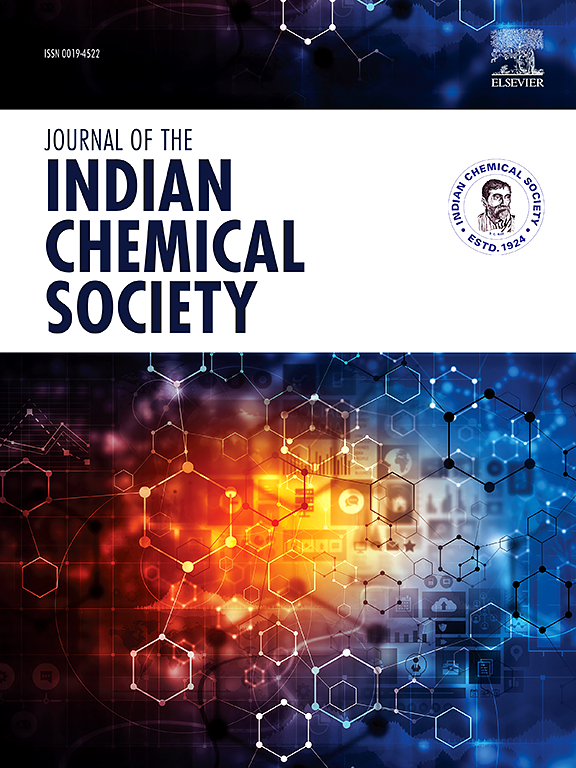Optimization of bio-oil and biochar production from defatted microalgae biomass via microwave-assisted catalytic cracking
IF 3.2
4区 化学
Q2 CHEMISTRY, MULTIDISCIPLINARY
引用次数: 0
Abstract
In this work, bio-oil and biochar were produced using microwave-assisted catalytic cracking (MACC) of defatted microalgae biomass (DMB) obtained from lipid extraction of Chlorella vulgaris. A maximum bio-oil yield of 58.34 % was achieved under optimized conditions, including 450 W of microwave power, a 10 % catalyst ratio, and a reaction time of 10 min. In comparison, the highest biochar yield of 65.11 % was recovered at 650 W, 10 % catalyst ratio, after 30 min. This shows that bio-oil yield is optimized under milder conditions, while biochar yield benefits from more intense and prolonged thermal treatment. Qualitative characterization revealed that the bio-oil exhibited low viscosity (9.74 mm2/s), indicating good flowability and resistance to oxidative degradation. Its notably high heating value of 41 MJ/kg is attributed to a high density (1.18 g/mL), suggesting a greater concentration of heavy hydrocarbons. Scanning Electron Microscopy (SEM) analysis showed that the biochar featured a porous structure with a high surface area. Additionally, Fourier-Transform Infrared Spectroscopy (FTIR) confirmed the presence of oxygenated functional groups in the biochar, at wavenumbers ranging between 1300 and 1800 cm−1. Moreover, this study also compared the product yields obtained from MACC with those from conventional pyrolysis. The results show that MACC produced significantly higher yields of bio-oil and biochar, exceeding those of pyrolysis by 24.45 % and 24.23 %, respectively, while also reducing reaction time and enhancing energy efficiency.

微波辅助催化裂化脱脂微藻生物质生产生物油和生物炭的优化研究
本研究采用微波催化裂化(MACC)技术,对从小球藻脂质提取得到的脱脂微藻生物质(DMB)进行了生物油和生物炭的制备。在450 W微波功率、10%催化剂配比、10 min反应条件下,生物油收率最高可达58.34%。在650 W、10%催化剂配比、30 min反应条件下,生物炭收率最高可达65.11%。这说明在较温和的条件下,生物油收率最佳,而更强烈和更长的热处理有利于生物炭收率的提高。定性表征表明,该生物油具有低粘度(9.74 mm2/s),具有良好的流动性和抗氧化降解能力。其显著的高热值为41 MJ/kg,归因于高密度(1.18 g/mL),表明重碳氢化合物的浓度更高。扫描电镜(SEM)分析表明,生物炭具有高表面积的多孔结构。此外,傅里叶变换红外光谱(FTIR)证实了生物炭中存在含氧官能团,波数范围在1300到1800 cm−1之间。此外,本研究还比较了MACC与常规热解的产率。结果表明,MACC工艺可显著提高生物油和生物炭的产率,分别比热解工艺高24.45%和24.23%,同时缩短了反应时间,提高了能效。
本文章由计算机程序翻译,如有差异,请以英文原文为准。
求助全文
约1分钟内获得全文
求助全文
来源期刊
CiteScore
3.50
自引率
7.70%
发文量
492
审稿时长
3-8 weeks
期刊介绍:
The Journal of the Indian Chemical Society publishes original, fundamental, theorical, experimental research work of highest quality in all areas of chemistry, biochemistry, medicinal chemistry, electrochemistry, agrochemistry, chemical engineering and technology, food chemistry, environmental chemistry, etc.

 求助内容:
求助内容: 应助结果提醒方式:
应助结果提醒方式:


